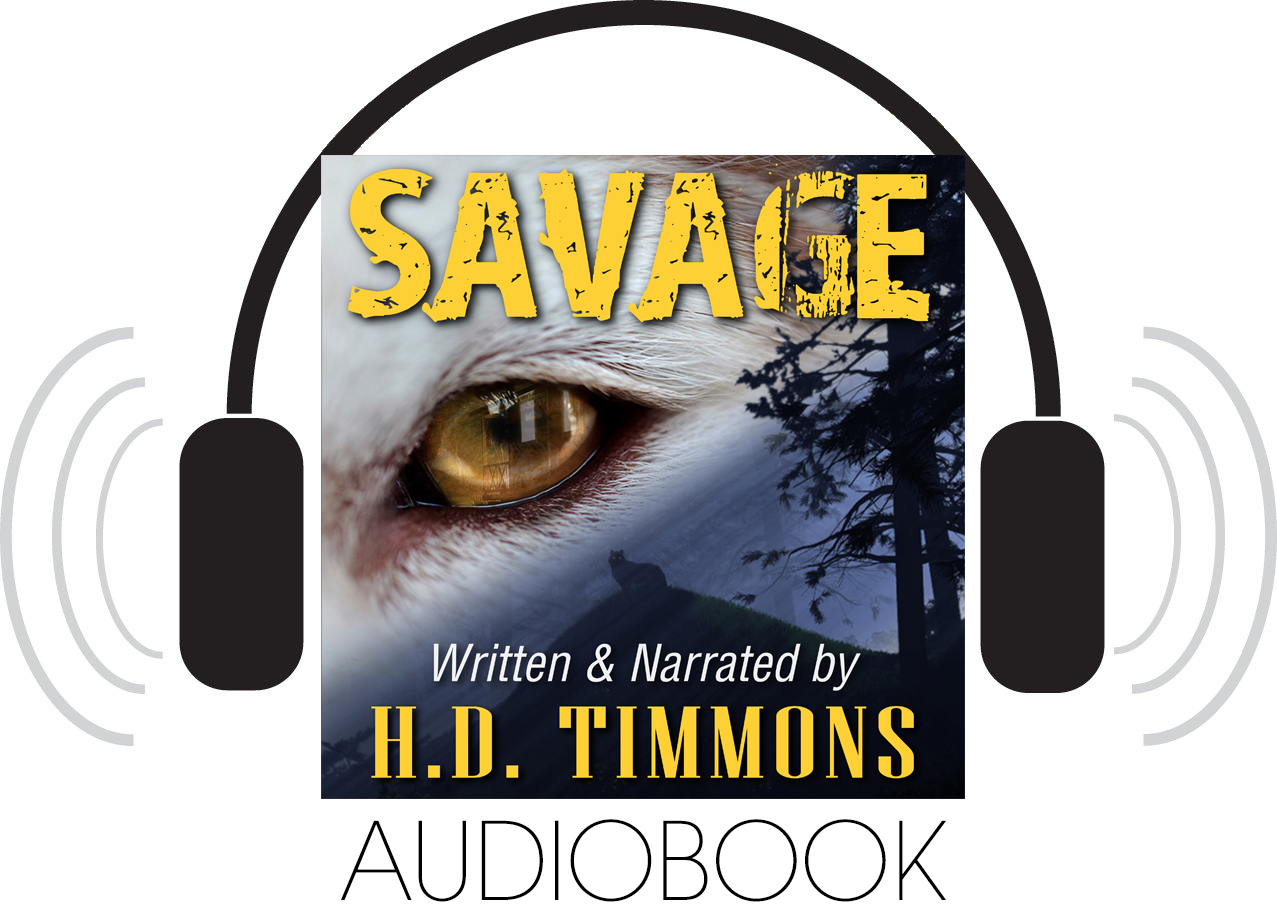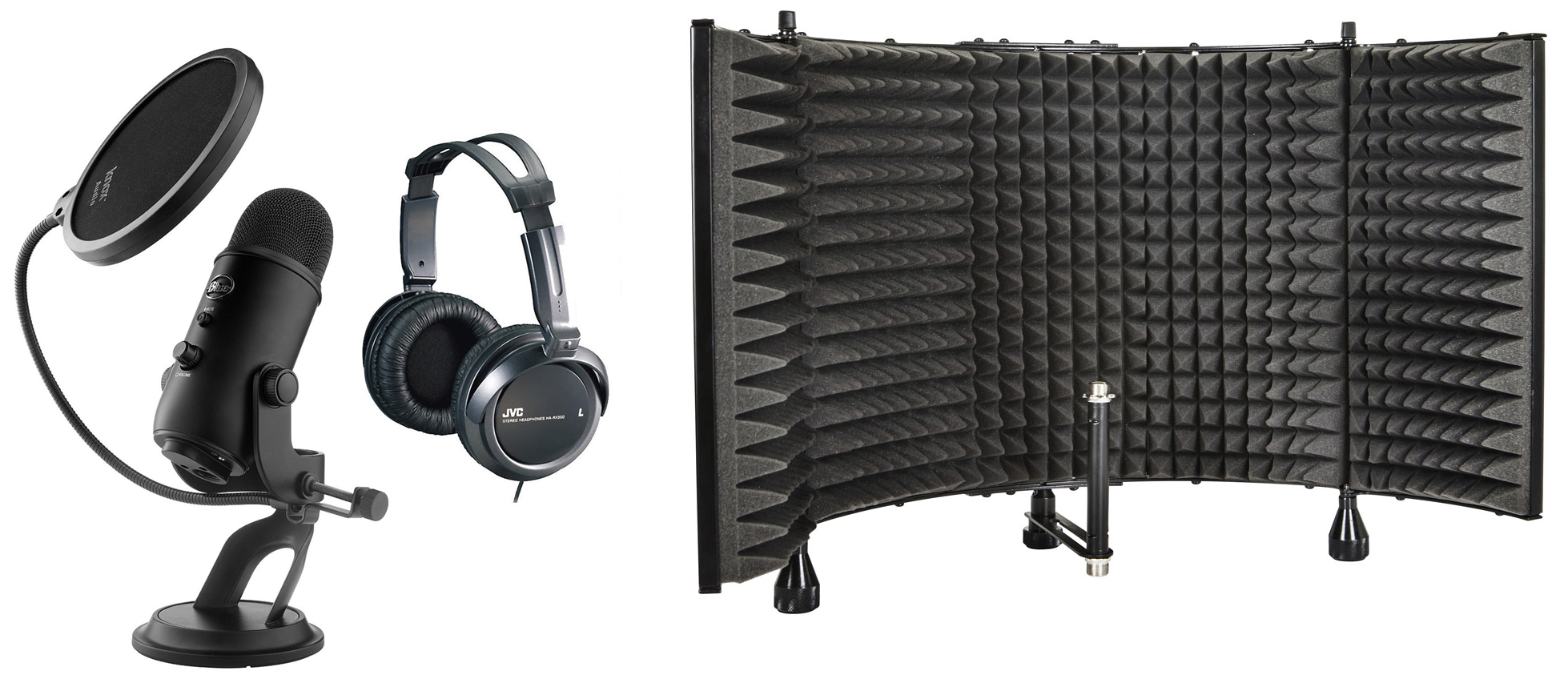Recording My First Audio Book December 15, 2015 – Posted in: Audiobooks – Tags: Audiobooks, DIY, indie, self-publishing
December, 2015 —
In 2014 my grandfather was 101, and sometime in late summer of that year he expressed an interest in reading one of my e-book stories, so I thought I’d print my short story Savage out for him. I printed it in decidedly super large text for easier reading because the macular degeneration of my grandfather’s eyes had made reading very difficult (he said it was like looking through an ice cube). I visited him in Brooklyn in January of 2015, and asked him if the extra large print had helped. He said It helped somewhat, but it was still difficult.
His hearing had deteriorated over the years as well, requiring the use of a hearing aide. It occurred to me that perhaps an audio book, heard through headphones, would be a better option for him, and promised that I’d work on it. Shortly after returning home, I contemplated the audio book idea, and began looking into what it would take to do it right. But, in early March, one day before my grandfather’s 102nd birthday, he passed away quietly in his sleep. The loss was huge, and over the next few months my thoughts about recording an audio book had vanished. What was the point? The person I was doing it for was gone.
Sometime in September I came across the large text version of my Savage story, and recalled my thought of doing an audio book version. Call it fulfilling a promise, or seeing an opportunity to branch out to another medium for my story, but I decided to go for it. I noticed many indie authors where making the leap to audio, and a suspense tale like Savage would lend itself nicely to an audio format for me to test the waters.
By virtue of the fact that I am an indie author, I don’t have a huge budget to book studio time, hire voice over talent, and sound engineers. To paraphrase Matt Damon in The Martian, I was going to have to DIY the shit of of this.

Blue Yeti USB Microphone Blackout Edition bundled with JVC headphones and Knox pop filter.
Step one was for me to research and buy a proper microphone. I opted for the Blue Yeti USB Microphone Blackout Edition bundled with JVC headphones and Knox pop filter ($139 on Amazon). My research also implied that a sound shield would be of some benefit. (Monoprice brand isolation shield, about $65).
Next, was to select some sort of audio editing software. There are several options out there, but I already had the Adobe suite of products that I use for graphic design, so Adobe Audition worked well for me. Naturally, there was a learning curve to understand how to properly record audio book narration and digitally master the raw audio to meet audio book recording specs. That took time, and lots of trial and error.
Inherent Frustrations
Aside from frustration that comes with learning the new software basics, and digital mastering techniques, recording has its own nuances to create obstacles that had to be worked through. The first of which was finding a quiet place to record. I began in my home office, but when I played back what I’d recorded I detected all sorts of background noises that you’d take for granted on a normal day. I decided to wait until night time to record, thus avoiding the cacophony from neighbors mowing their lawns, dogs barking, kids playing, birds singing, and the myriad of other disturbances. It was to the point that I could hear the subtlest of noises through my headphones, such as detecting a lawn sprinkler turning on five houses away.

My home office recording set up.
It was late August, and night time recording still had challenges. My microphone was picking up the sound of my air conditioner blowing through the vents, and the hum of my refrigerator three rooms away. My office has windows, so I could never escape the noise of vehicles driving by and planes flying overhead.
I tried to time my recording in between random ambient sounds, like a musician waiting for my queue to add my instrument to the melody of the grand symphony. Then, there were several nights of rain. Noise. Even when it stopped raining I could still hear cars whooshing down the wet street. Noise. My recording was soon peppered with profanity mumbled under my breath as a result of my frustration.
Once More, From the Top
By September, I’d decided that to preserve my sanity I needed to relocate to an interior room (with no windows), and chose to set up a makeshift recording booth in my closet.

My closet converted to a recording booth, complete with pants hanger to hold my script.
Luckily, the weather had been gracious enough that I didn’t need to run the air conditioning. I noticed that I was picking up a slight hum from the fluorescent light in my closet, so I brought in a small incandescent lamp to use instead. I even used a pants hanger to hold my script while I read. The sound recording was so much better in my makeshift sound booth that, when I compared the new chapters I’d recorded with chapters 1 through 3 recorded earlier, I felt it was best to re-record 1 through 3 for consistency’s sake. Smart choice. It also gave me a chance to do a better reading rendition of those first few chapters (my first take sounded like I was Levar Burton reading to children on Reading Rainbow).
Voices in My Head
My story is about a writer who goes to a mountain cabin, so I thought it would be a pretty straight forward read. Nothing too complicated. As I read, I came to a spot where a minor character says something. I skimmed my story and realized that, not including myself as narrator, there were six characters in my story that I needed to decide how to address for an audio book. The main character, and two others could simply be a version of the narrator (me), so no major voice shift there. But there were three other characters that had southern accents. They had to be distinctly different if I wanted to do the story justice. When I originally wrote the story I had these voices in my head, but now I had to make them real.
Quality Check
Once all the chapters were completed I needed to evaluate my production for quality. I have listened to several audio books, so I knew how professional ones sounded. It helped a lot to have that frame of reference. I carefully listened to each chapter over and over until I was sick of hearing my own voice. I had found a quality check form online that helped me determine what to look for, and note whether I needed to re-record bits or whole sections (referred to as “pick ups”), or try to fix sound issues digitally. Things I looked for were misreads, pronunciations, diction, noise, plosives, or distortion.
I had plenty to fix and re-record, but the effort was worth it.
Putting it All Together
My initial idea for the audio book was to add subtle sound effects here and there to help draw the listener deeper into the story. Reading my story as a script gave me an opportunity to see where those effects would work best; adding sound effect notes in the page margins as I read. I discovered that most of the sound effects I needed could be found as free downloads. I had to create only a few sounds myself when I couldn’t find the right one online. I think it turned out pretty well.
Layering the effects with the mastered narration audio track was the most fun of the project. I could play with where to insert just the right sound effect, adjust the volume to not distract from the narration, and hear my story come to life.
That’s a Wrap
Finally, I had a finished product by early November. But, it still wasn’t really ready for mass consumption. I needed to have a select group of people listen to it and give their feedback. Thankfully, it was met with overall good comments and honest critique (thank you, folks… and you know who you are). Perfect. Right after Thanksgiving I tweaked a few things here and there with no big hassle. But, was I truly ready to put it out in the world? Did I need to let more people preview it? Or was I just deliberately delaying the inevitable? Sure, I was scared, but I was also satisfied with the final version. So, I went for it.
Here we are in December, and I now have my very first DIY audio book for sale through Audible. It was a labor of love, never forgetting that my grandfather was the catalyst that spawned the idea.
 Even though it was a painstaking process, I look forward to doing it again. Oh, and if you download my audio book of Savage I’d love to get your feedback. I hope you enjoy it.
Even though it was a painstaking process, I look forward to doing it again. Oh, and if you download my audio book of Savage I’d love to get your feedback. I hope you enjoy it.
You can find it on Audible, Amazon, and iTunes. Click here to find where to download the original e-book version.





